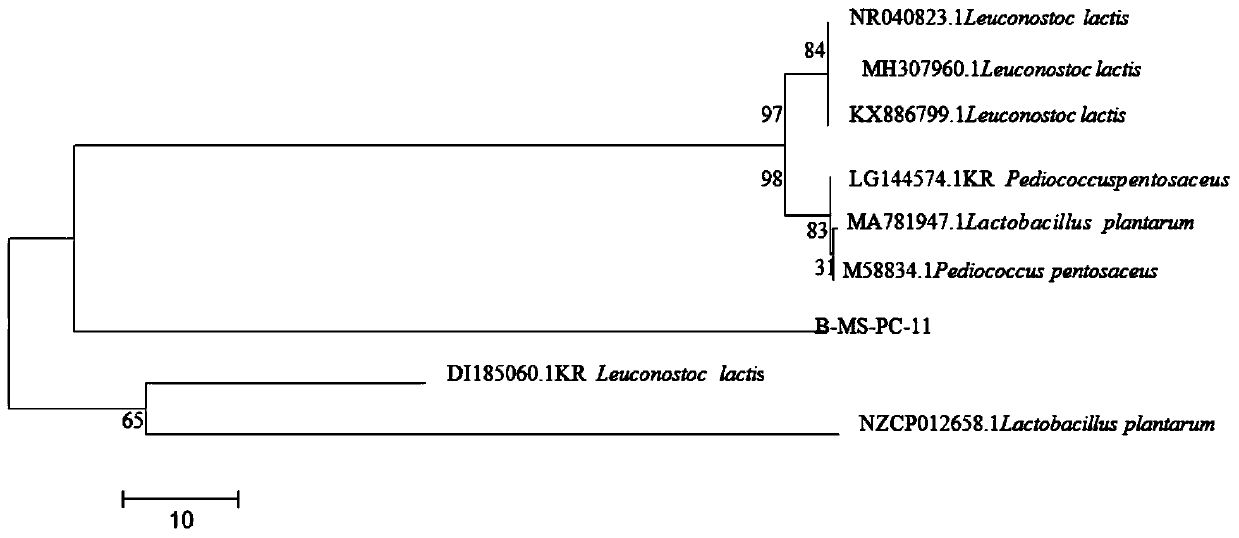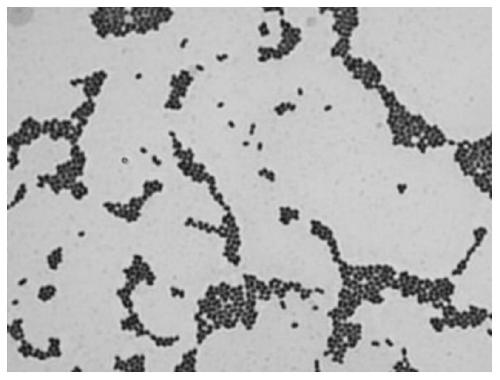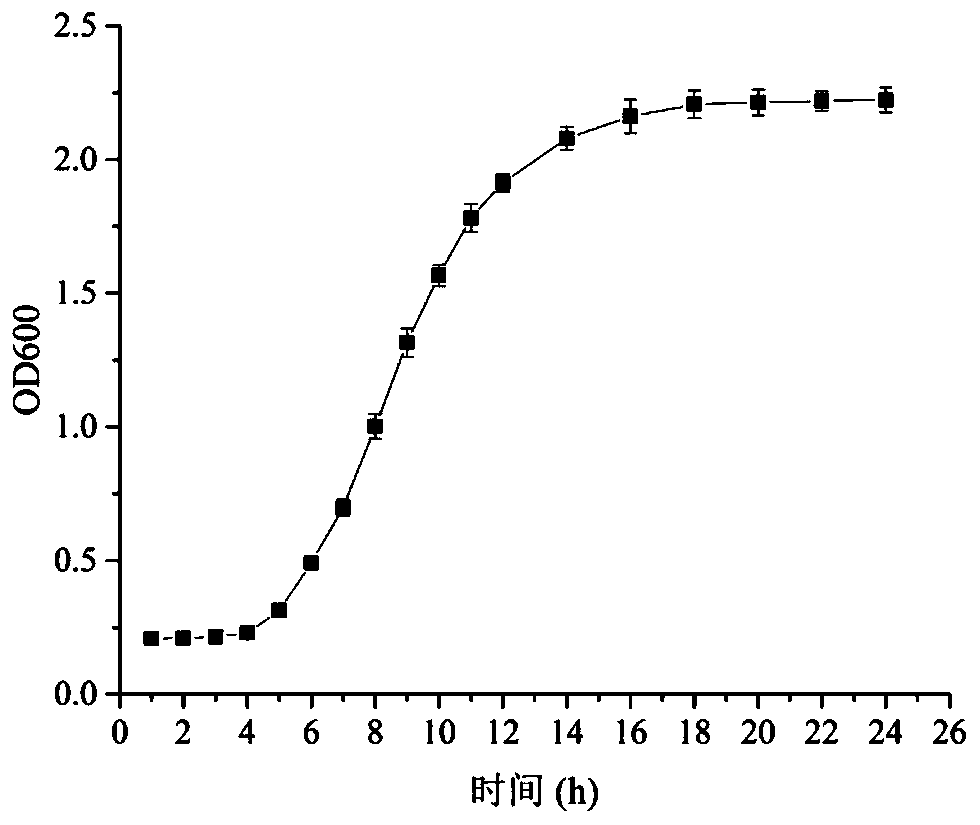Leuconostoc lactis and applications thereof
A Leuconostoc and lactic acid technology, applied in the field of microorganisms, can solve problems such as lack of excavation, and achieve the effects of promoting sensory quality, improving aroma quality, and increasing yield
- Summary
- Abstract
- Description
- Claims
- Application Information
AI Technical Summary
Problems solved by technology
Method used
Image
Examples
preparation example Construction
[0068] And provide the preparation method of above-mentioned work leavening agent, comprise the following steps:
[0069] S1 provides sterile skim milk;
[0070] The specific steps are: weigh 10-12% (m / v) skimmed milk powder, 2%-4% (m / v) glucose and 1-2% glycerin, add pure water to fully dissolve it, and heat it at 95°C Sterilize for 20 minutes, then cool to 37-40°C to obtain aseptic skim milk.
[0071] S2 activates the Leuconostoc lactis species;
[0072] The specific steps are: use an inoculation loop to take a ring of Leuconostoc lactis CCTCC M2019444 bacterial species preserved in a freeze-dried tube dissolved in sterile water, streak it on the MRS agar medium plate, and cultivate it in a 37°C incubator for 24 to 48 hours to Single colonies grow. Described MRS agar medium is a lactic acid bacteria medium, and is not necessarily limited to MRS agar medium, and all culture mediums capable of cultivating strains can be used.
[0073] S3 prepares the strain culture medium,...
Embodiment 1
[0104] The collection, separation, selection method of embodiment 1 Leuconostoc lactis CCTCC M 2019444
[0105] (1) Obtain a suitable dilution gradient and culture
[0106] Samples were collected from naturally fermented kimchi products in Sichuan, Jiangsu and other places. The collected samples were refrigerated in an ice box, kept at a lower temperature and brought back to the laboratory and stored at -80°C for later use. Weigh 1mL of the sample, add it to 9mL of sterile water, and then take 1mL of the bacterial solution and dilute it in 9mL of sterile water, so that the concentration of the sample is diluted to 10 -4 , taking four dilutions of 10 to 10 4 50 μL of each bacterial suspension was spread on the MRS agar plate, and cultured at a constant temperature of 37 °C for 36-48 h under facultative anaerobic conditions.
[0107] (2) Separation and purification
[0108] Use the plate streaking method to select single colonies with different sizes, raised, slightly white,...
Embodiment 2
[0119] Example 2 Identification of Leuconostoc lactis L7ZSAAS01
[0120] (1) Physiological and biochemical identification
[0121] Strain L7ZSAAS01 is a Gram-positive, peroxidase-negative, non-motile bacillus capable of growth at 15°C and 40°C.
[0122] (2) PCR amplified 16S rDNA sequence analysis of strain L7ZSAAS01
[0123] 1) Aspirate 1mL of shaken and mixed liquid culture medium, centrifuge and discard the supernatant, blow and wash with 1mL sterile water twice, centrifuge and discard the supernatant, and use it as a template for colony PCR. The PCR system is 50 μL, of which Mix is 25 μL, 27F is 1 μL, 1492R is 1 μL, and ddH2O is 23 μL.
[0124] The primers used were (16s27F:GAGAGTTTGATCCTGGCTCAG; 16s 1492R:CGGCTACCTTGTTACGACTT). The nucleotide sequence of the amplified fragment is shown as SEQ ID No 3, and the length is 429bp.
[0125] Phylogenetic tree analysis was performed on the sequence obtained by sequencing, and the experimental results are attached figure 1 ...
PUM
 Login to View More
Login to View More Abstract
Description
Claims
Application Information
 Login to View More
Login to View More - R&D
- Intellectual Property
- Life Sciences
- Materials
- Tech Scout
- Unparalleled Data Quality
- Higher Quality Content
- 60% Fewer Hallucinations
Browse by: Latest US Patents, China's latest patents, Technical Efficacy Thesaurus, Application Domain, Technology Topic, Popular Technical Reports.
© 2025 PatSnap. All rights reserved.Legal|Privacy policy|Modern Slavery Act Transparency Statement|Sitemap|About US| Contact US: help@patsnap.com



